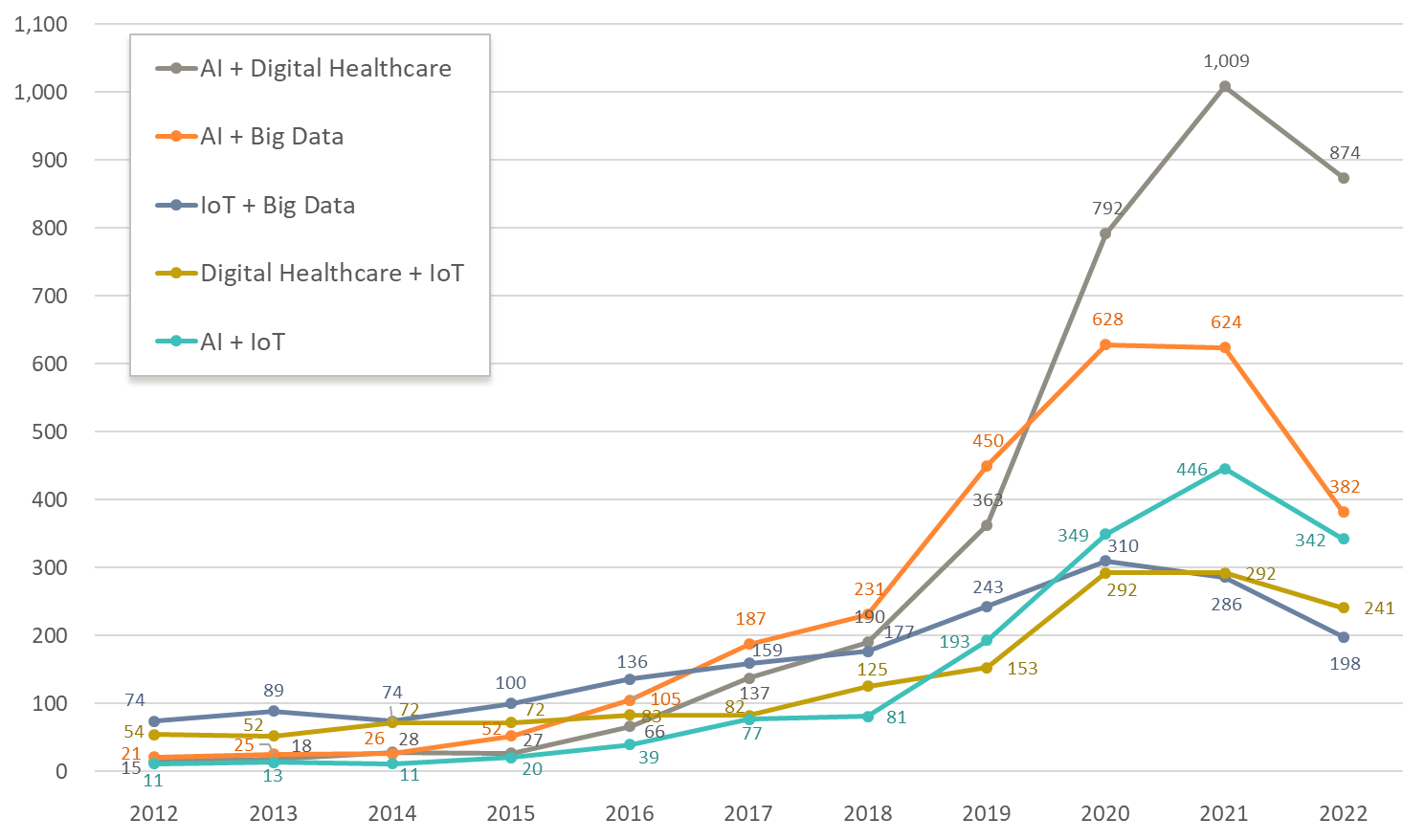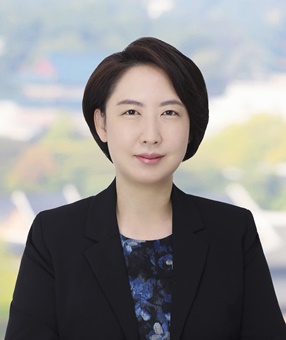The Korean Intellectual Property Office (KIPO) has been making efforts to improve examinations of technologies relating to the Fourth Industrial Revolution (4IR). KIPO has categorized the technologies into key technologies and technologies where the key technologies are being combined ("convergence technologies") as shown in the table below (see KIPO press release, November 17, 2022):
| 8 Key Technologies of the 4IR | 11 Convergence Technologies of the 4IR |
| - Artificial Intelligence (AI) - Big Data - Internet of Things (IoT) - Digital Healthcare - Biomarker - Intelligent Robot - Autonomous Driving - 3-Dimensional Printing |
- AI & Digital Healthcare - AI & Big Data - AI & IoT - AI & Autonomous Driving - AI & Intelligent Robot - Digital Healthcare & IoT - Digital Healthcare & Intelligent Robot - Digital Healthcare & Big Data - IoT & Big Data - IoT & Autonomous Driving - Autonomous Driving & Intelligent Robot |
As more patent applications for convergence technologies are being filed, it is important to have a better understanding of the examination guidelines for the base key technologies used in the convergence technologies. Thus, KIPO has been updating its examination guidelines for different technology areas relating to 4IR and providing clearer examination standards with many illustrative examples (including actually examined cases): artificial intelligence (AI), Internet of Things (IoT), biotechnology, plant, medical, intelligent robot, autonomous driving, 3D printing, and chemical compounds.
Some notable updates in the guidelines include: for AI, the guidelines define an AI training model subject to a patent and specify formality of claims and written description requirements; for the IoT, the guidelines clarify standard for determining inventiveness; and for biotechnology, the guidelines have added examination cases for technologies involving biomarkers in diagnosing a disease.
According to a KIPO press release, the filing records over a ten-year period from 2012 to 2021 show an increasing trend in the convergence of key technologies. Over the ten year period, the number of patent application filings for convergence technologies have seen a 22-fold increase (from 95 to 2,103 filings); whereas, for the key technologies, there has been a 3.7-fold increase (from 6,710 to 24,732 filings).
Based on KIPO's data, AI has been the most integrated technology among the key technologies. The number of patent application filings for convergence technologies integrated with AI has seen a 44-fold increase over the ten year period. Of these AI convergence technologies, the convergence of digital healthcare and AI is leading the number of annual filings since 2019, outpacing the convergence of big data and AI.

In view of the rapid convergence of technologies and the increase in need for protecting 4IR technologies, we expect applicants and practitioners to benefit from the clearer examination standards, which are likely to lead to an increase in allowance rates. For our newsletters on some highlights of the updated examination guidelines, please refer to KIPO Publishes Examination Guidelines for Autonomous Vehicle Inventions, KIPO Publishes Examination Guidelines for Intelligent Robot Inventions, and KIPO Publishes Examination Guidelines for 3D Printing Inventions.
Related Topics






